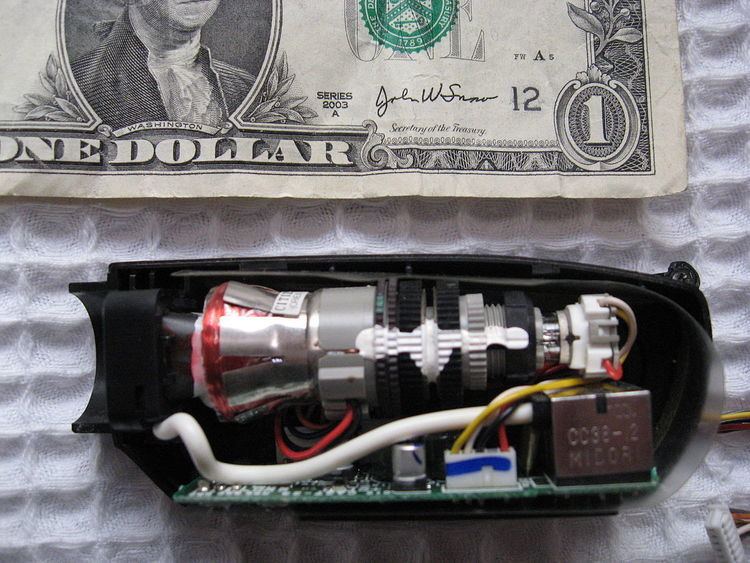 | ||
An electronic viewfinder (EVF) is a camera viewfinder where the image captured by the lens is projected electronically onto a miniature display. The image on this display is used to assist in aiming the camera at the scene to be photographed. It differs from a live preview screen in being smaller and shaded from ambient light.
Contents
The sensor records the view through the lens, the view is processed, and finally projected on a miniature display which is viewable through the eyepiece. Electronic viewfinders are used in digital still cameras and in video cameras.
Some cameras (such as Panasonic, Sony, Fujifilm) have an automatic eye sensor which switches the display from screen to EVF when the viewfinder is near the eye. More modest cameras use a button to switch the display. Some have no button at all.
Advantages
Like the live preview screen, electronic viewfinders can show additional information, such as an image histogram, focal ratio, camera settings, battery charge, and remaining storage space. Some have a focus peaking feature that highlights areas of the frame that are in focus. They are also in several ways more accurate than an optical viewfinder (OVF):
Limitations
Electronic viewfinders have the following limitations:
Electronic viewfinders have been in use with bridge cameras for some years but with limited resolution and image quality.
Meanwhile, the image quality due to higher resolution and OLED Technology is very high.
They are used in most mirrorless modern system cameras (e.g. Panasonic Micro Four Third System, Sony NEX, Sony SLT, Nikon V1).
Many professional photographers and advanced amateurs prefer DSLR cameras that have a true optical through-the-lens viewfinder (OVF). From 2006 some DSLR camera models provide both through-the-lens viewing and a "live preview" on the LCD (as distinct from an electronic viewfinder). These include the Olympus E-330, E-410, E-510 and E-3, the Panasonic Lumix DMC-L1 and DMC-L10, the Leica Digilux 3, the Canon EOS 40D, EOS 50D, EOS 60D, EOS 7D and EOS-1D Mark III, and the Nikon D3, D300 and D90.
Hybrid viewfinder
To get the advantage of both optical and electronic viewfinders some cameras have hybrid viewfinders. These display the image in an optical eyepiece viewfinder, or electronically on an LCD screen. Examples include the Fujifilm FinePix X100, X100S, X100T and X-Pro1.
